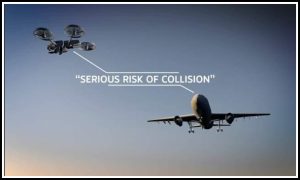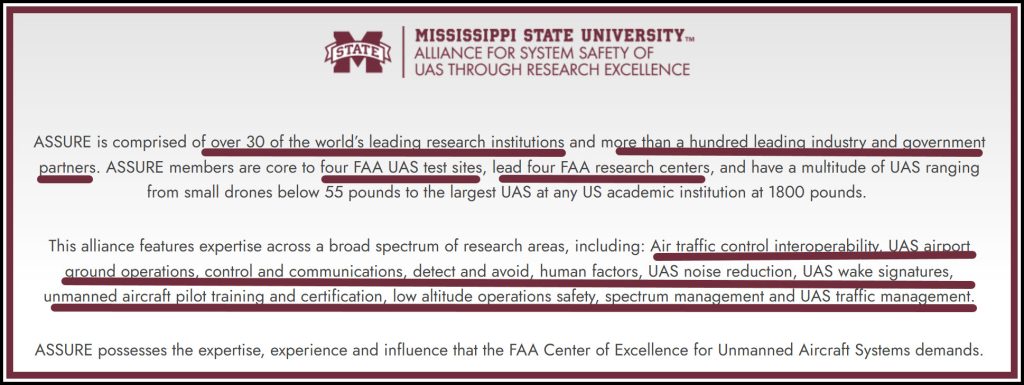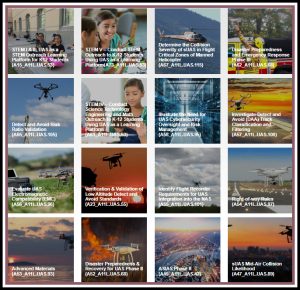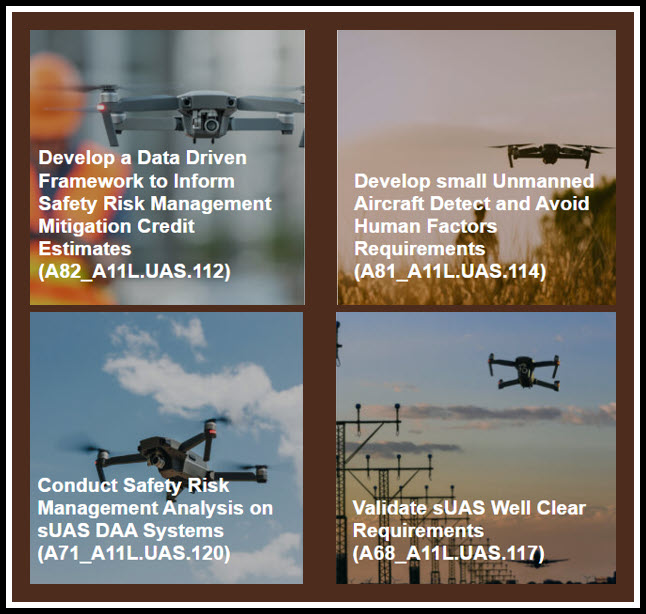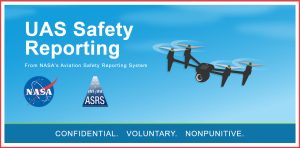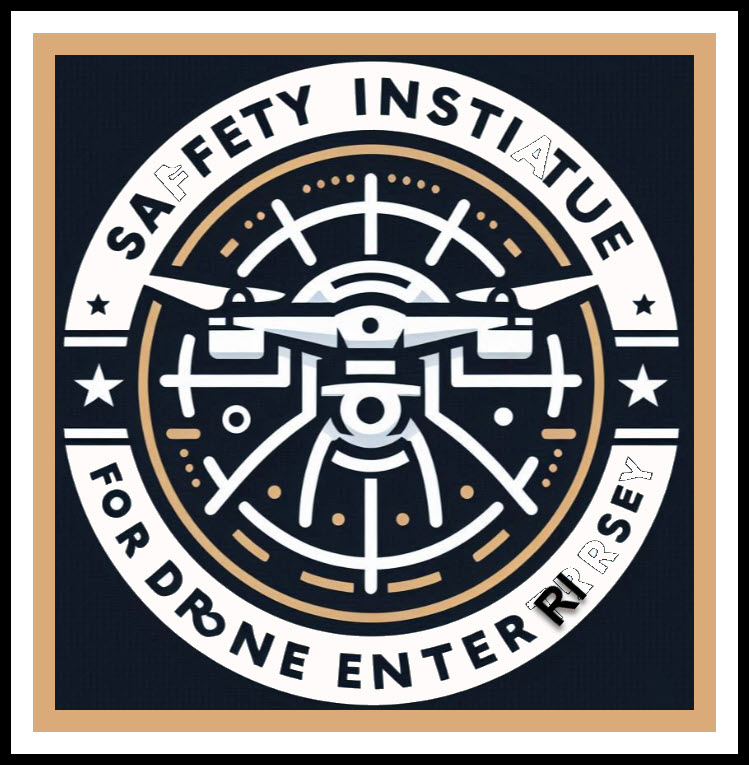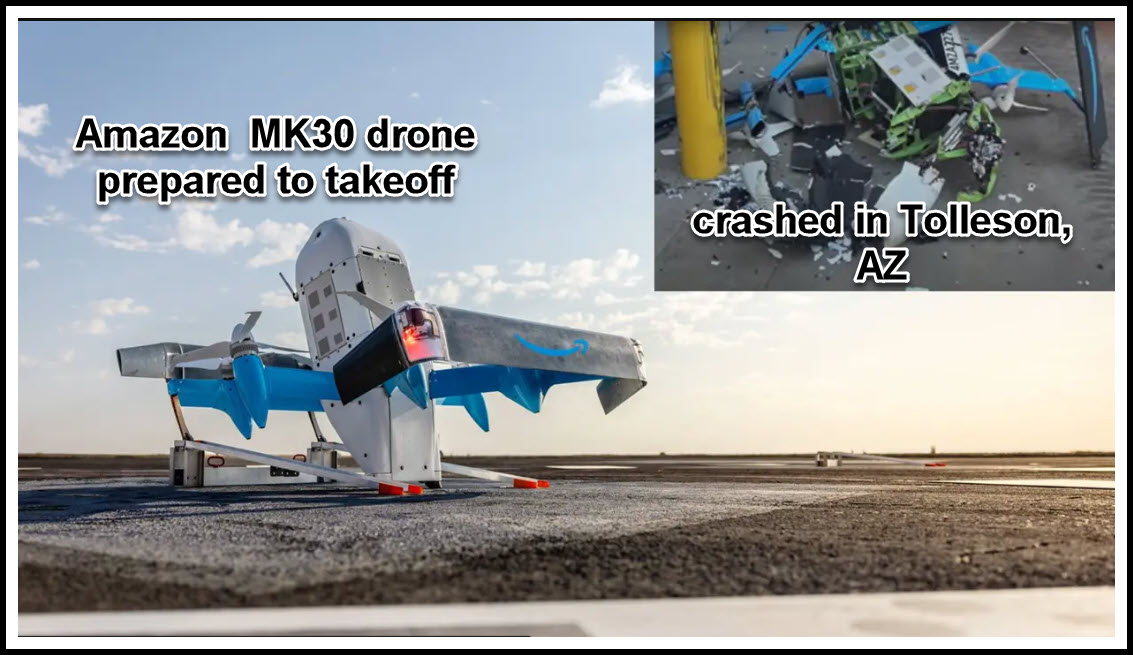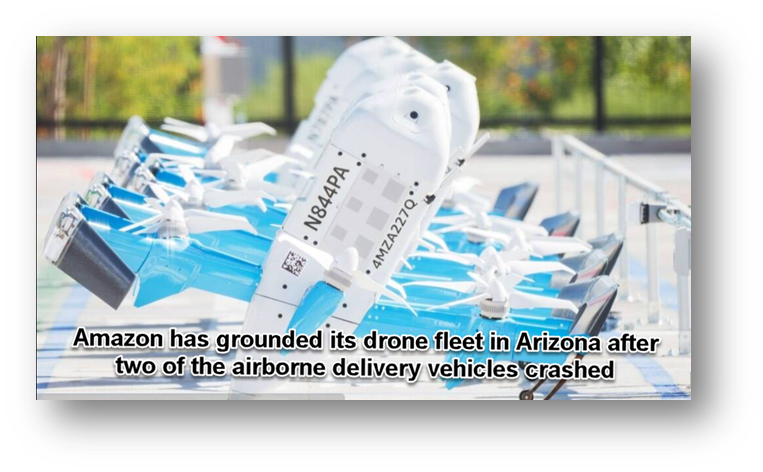Drone Dangers? Need for UAS risk reduction analysis and recommendations?

The recent article about two drones collided with a crane in Arizona was a catalyst to research what resources, public and private, exist to analyze, identify risks (particularly systemic and new) and suggest responses to minimize those potential problems.
UAS operations have escalated exponentially. So far the record is within tolerable limits, i.e. the press does not report every accident/incident. Here are some numbers:
U.S. Drone Accident Overview
- Over 1.1 million drones were registered in the U.S. as of 2023.
- Approximately 200 drone-related accidents were reported worldwide in 2022, though this figure likely underrepresents U.S.-specific incidents.
- FAA reports a 45% increase in drone incidents near airports between 2020 and 2022. {The FAA receives more than 100 such reports near airports each month. }
- Average cost of property damage per drone accident is estimated at $7,500.
- Injury and fatality data: The FAA has acknowledged incidents involving drones falling on people, but comprehensive national statistics on injuries or fatalities are not publicly consolidated. The ASSURE Small UAS Ground Collision Report provides technical modeling but not a count of actual injuries.
Key Risk Factors
- Operator error accounts for 65% of drone accidents.
- Loss of visual line of sight is the leading cause of crashes (40%).[1]
- Urban areas have seen a 35% increase in drone accidents over the past two years.
The ASSURE reference was helpful and the organization explains its resources and areas of research well:
Its work product is impressive, voluminous but not necessarily OPERATOR oriented information—
Their “in progress” list holds some useful information for people and organizations seeking to up their safety performance:
DATA is the primary tool that the FAA, NTSB and NASA rely on to reduce risks. The LIBRARY that captures, without punishment, mistakes that occur and that INSTRUCT is labeled UAS ASRS. This bespoke site is part of the broader system of data collection managed by N[AERONAUTICS]SA.[2]
As with other elements of this assignment, ASRS publishes periodic VERY OPERATOR FRIENDLY REPORTS ABOUT DRONE INCIDENTS.
Finally ASRS’s Director, BECKY HOOEY, synthesized four years of records about UASs on which she based a 29 slide presentation on the Drone Safety Record. It contains insights into:
- The size of the fleet
- The number of Part 107 certificates
- Multiple dimensions of the operators, drones, altitude at time of accident/incident, proximity to airports, etc.
- Contributing factors
- The unique issues influencing AgOPs
- How to mine the ASRS data base
- ETC,
US Aviation has greatly benefited from talented, focused trade associations (A4A, AOPA,NATA, NBAA, RAA, VAI and others) that produce insights that assist their Members take actions, frequently preventative, contributing to reduction of significant safety risks. While larger aviation organizations have the staff to analyze the raw ASRS and ASIAS information, the safety professionals who work for these alphabet acronym offices have access to a broader range of information, especially from their members. Their advice is well regarded by their members and the FAA/NTSB/NASA.
This sort of regulatory expertise and data analytical competence are of even GREATER VALUE to the individual pilots, small business flight departments and others with smaller staff support.
The Drone segment is largely represented by the one person shop category. Even the larger organizations, particularly DRONE DELIVERY, may have the budget to employ folks who know safety. Big and small, however, are involved in operations which are evolving every day– new technology, advanced sensor systems, innovative navigational technology, 24 hour market demand, drones with greater and greater speed and, as new enterprises enter this space, GREATER CONGESTION with higher levels of collision risk. Even the most qualified analyst out in the field is at a disadvantage to THE INDIVIDUALS who are engaged in high level discussions and who are exposed early to these possibly disruptive developments.
PERHAPS THERE IS A NEED for a SAFETY INSTITUTE FOR DRONE ENTERPRISE, a team– competent to covert the technical jargon that is the secret language of DC into simple sentences filled with actionable information for all UAS operations. ???
Two Amazon Delivery Drones Collide with Crane in Arizona
Incident Overview and Immediate Response
On the morning of Wednesday, October 1, TWO AMAZON DELIVERY DRONES collided with a construction crane in Tolleson, Arizona, resulting in both drones crashing into separate parking lots near a local business park. The drones, each traveling northeast, struck the crane within minutes of each other, approximately two miles from Amazon’s drone launch site in Tolleson. Local authorities confirmed that no injuries were reported in connection with the incident.
In response to the crashes, AMAZON TEMPORARILY SUSPENDED its drone delivery service in the Tolleson area as a precautionary measure. The service, which commenced operations in the region last November, had previously been paused in January to implement safety upgrades. The Federal Aviation Administration (FAA) issued a statement confirming the collision of two MK30 drones with the crane’s boom and announced that it would investigate the incident. The National Transportation Safety Board (NTSB) is also conducting an investigation, according to Tolleson police. This event marks the first reported crash involving Amazon’s drone delivery service in the area.
Implications for Drone Delivery Services and Industry Response
Amazon’s MK30 drones, each weighing nearly 80 pounds, are engineered for lightweight deliveries and are currently deployed in select locations across the United States. THE RECENT COLLISION UNDERSCORES THE ONGOING CHALLENGES FACED BY THE DRONE DELIVERY SECTOR, INCLUDING REGULATORY SCRUTINY, SAFETY CONCERNS, AND TECHNICAL OBSTACLES.
Industry analysts suggest that such incidents may prompt heightened regulatory oversight and could potentially delay Amazon’s broader plans for expanding its drone delivery network. The FAA’s proposed Part 108 rules, designed to facilitate beyond-visual-line-of-sight drone operations, may also be subject to increased examination in light of this crash.
Competitors in the drone delivery market are closely observing these developments. Companies such as Uber, which is collaborating with Flytrap to pilot drone deliveries for Uber Eats, along with ZenaTech, AeroVironment, and AgEagle Aerial Systems (EAGLENXT), are actively expanding their own drone logistics initiatives. The Tolleson incident may lead these firms to intensify their focus on safety protocols and regulatory compliance as the drone delivery market continues to evolve.
Tolleson police have emphasized that this is the first incident of its kind since the launch of Amazon’s drone delivery service in the city. Both federal and local investigations remain ongoing as Amazon reviews its safety procedures and the industry assesses the broader implications for the future of drone-based deliveries.
[1] The new BVLOS regime should reduce this.
[2] FAA’s ASIAS publishes a comprehensive collection of UAS Accident and Incident Preliminary Reports.
